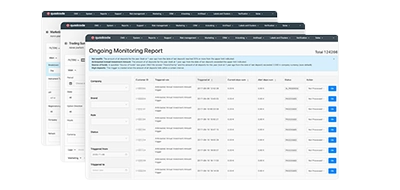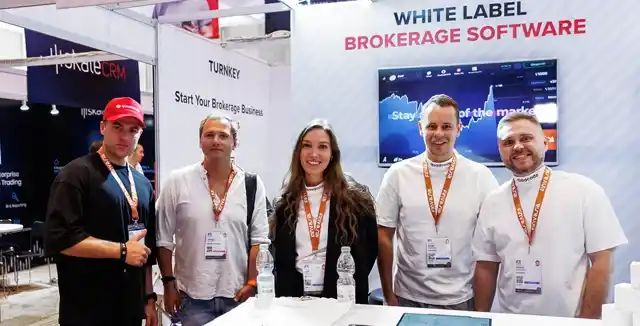Назад
Contents
Что такое ордер «исполнить или аннулировать» (FOK) — определение, примеры, как это работает


Iva Kalatozishvili
Business Development Manager

Demetris Makrides
Senior Business Development Manager
Ордер «исполнить или аннулировать» (FOK) — это тип условного ордера, который вы можете разместить у своего брокера при торговле ценными бумагами, такими как акции. При использовании ордера FOK вся сделка должна быть исполнена немедленно в соответствии с указанными вами параметрами, такими как цена и количество, в противном случае ордер будет автоматически аннулирован. Это гарантирует, что вы либо полностью исполните сделку в соответствии с вашими требованиями, либо сделка не состоится вовсе.
Определение ордера «исполнить или отменить»
Ордер «исполнить или аннулировать» (FOK) предоставляет трейдерам строгий набор предопределенных условий, которые должны быть полностью выполнены для завершения сделки. С ордером FOK вы заранее точно определяете детали сделки, включая желаемый актив, количество для сделки и максимально приемлемую цену.
Этот тип ордера предполагает немедленное полное исполнение в соответствии с предложенной вами структурой сделки, в противном случае транзакция не будет совершена. Отличительной чертой ордера FOK является его принцип исполнения «всё или ничего». Если рынок не может мгновенно исполнить весь объём ордера одновременно по установленной вами лимитной цене или лучше, сделка отменяется или «закрывается», а не исполняется частично.
Не предоставляется возможность частичного завершения транзакции — она либо выполняется без проблем в соответствии с заданными вами фильтрами, либо быстро отзывается. Это дифференцированное условие отличает ордера FOK от других типов ордеров, которые могут быть исполнены частично, прежде чем несовпадающие части останутся открытыми в книге ордеров.
Заранее определяя идеальную структуру сделки и требуя соблюдения этих фильтров для её завершения, FOK помогают трейдерам придерживаться дисциплинированного, чёткого подхода. Уверенность в немедленном максимальном исполнении или быстрой отмене обеспечивает ясность, исключая частичное исполнение, которое может поставить под угрозу запланированную позицию.
Как работает ордер «исполнить или отменить»
При подготовке ордера FOK вы определяете условия сделки непосредственно со своим брокером. Это включает в себя выбор биржевого актива, установление максимальной цены через лимит и определение точного количества, предназначенного для исполнения.
Получив данные, ваш брокер немедленно передаст FOK в электронном виде на соответствующую биржу. Здесь информация об ордере отображается в режиме реального времени на рынке, содержащемся в базе данных книги ордеров. Затем компьютеры биржи усердно ищут любые соответствующие встречные ордера или группы ордеров, соответствующие заданным условиям.
Если запрошенные объёмы могут быть выполнены мгновенно по лимитной цене или ниже, сделка будет завершена без проблем в режиме реального времени. Однако, если мгновенное соответствие спецификациям невозможно из-за неполной ликвидности в книге заказов, программа FOK инициирует автоматическую отмену всей предложенной транзакции.
В отличие от альтернативных типов ордеров, таких как ордера «на день» или «действителен до отмены», которые сохраняются неограниченное время до исполнения или ручного отзыва, FOK используют протоколы истечения срока действия, которые аннулируют неисполненные ордера в течение нескольких секунд. Это сбрасывает торговое предложение и предотвращает задержку ордера с неполным доступом к ликвидности.
Рассмотрите возможность использования гипотетического ордера FOK для покупки 50 000 акций с лимитом в 10 долларов. Получив этот ордер, ваш брокер мгновенно передаст его на биржи. Если бы 35 000 акций были доступны по цене 10 долларов или ниже, разница привела бы к отмене всей сделки, а не к частичному исполнению. Такое жёсткое исполнение гарантирует полное или частичное удовлетворение ваших заранее определённых потребностей.
Такие переменные условия, как колебания цен или непредвиденные разрывы ликвидности, также могут привести к отмене ордера из-за невозможности точно выполнить условия. Ускоренное истечение срока гарантирует разрешение ситуации, избегая неопределенных рисков, присущих затянувшимся невыполненным ордерам.
You may also like

Как долго действует ордер «исполнить или уничтожить»?
Используя строгую условность ордера FOK, важно понимать его эфемерный срок действия на рынке. В отличие от других типов ордеров, которые могут существовать на биржах длительное время, FOK имеют запрограммированные сроки истечения, тщательно разработанные с учётом скорости современных торгов.
В связи с необходимостью мгновенного подтверждения предустановленных фильтров при выставлении ордера большинство бирж ограничивают срок, в течение которого входящий ордер FOK может оставаться без обработки, прежде чем будет активирована его автоматическая отмена. Хотя сроки могут незначительно различаться в зависимости от площадки и активов, ордера обычно отменяются в течение нескольких секунд, если соответствующая ликвидность не появляется немедленно.
Этот мизерный срок жизни стратегически соответствует преобладающим условиям современных ликвидных рынков. В условиях стремительного технологического прогресса, перераспределяющего поток заявок по всему миру со скоростью в доли секунды, кратковременные задержки могут привести к колебаниям цен, достаточным для нарушения предварительно откалиброванных торговых параметров. Кратковременная доступность неисполненных ордеров FOK защищает трейдеров от потенциально непредвиденных последствий.
Для сравнения, альтернативные виды заказов, такие как заказы на день или заказы с отменой до востребования, могут оставаться в бухгалтерских книгах неопределенно долго, поддерживая позиции до закрытия посредством встречных сделок или дискреционной отмены. Хотя возможности участия продлеваются, риски также возникают из-за отсутствия установленных сроков для неисполненных заказов, подверженных колебаниям рынка.
В условиях обильной ликвидности, которая распространяется без задержек, эфемерные сроки исполнения ордеров FOK оказываются выгодными. Строгие требования к исполнению в сочетании с короткими периодами действия ордеров гарантируют определённые результаты благодаря мгновенному исполнению или немедленному аннулированию ордеров. Частичное исполнение ордеров исключается благодаря жёсткой дисциплине исполнения «всё или ничего».
Естественно, сокращение срока действия снижает вероятность соответствия возникающим ордерам по сравнению с постоянными инструкциями. Однако для стратегий, основанных на чувствительности ко времени и предопределённых критериях, немедленная определённость важнее потенциальных долгосрочных возможностей по мере изменения условий. Кратковременные свободные ордера способствуют ясности, свойственной современным быстрым рынкам.
Разница между приказами FOK и IOC
При немедленной сделке вам необходимо определить, какой условный ордер соответствует вашим конкретным потребностям — исполнение или аннулирование (FOK) или немедленное исполнение или отмена (IOC). Хотя оба варианта требуют ускоренного исполнения при открытии, их различная обработка неполной ликвидности имеет свои плюсы и минусы, требующие тщательного анализа.
IOC попытается немедленно исполнить ваш ордер в полном объёме по указанной лимитной цене. Однако, если полное соответствие недоступно, будет исполнена любая возможная часть, а оставшаяся часть будет аннулирована из открытых книг ордеров без остаточного риска. В отличие от этого, несовпавший ордер FOK приведёт к аннулированию всего предложенного объёма транзакции как единой единицы.
Рассмотрите возможность покупки 25 000 акций с лимитом в 15 долларов США, используя оба условия последовательно. Независимая операционная компания (IOC) может получить 10 000 акций немедленно, в то время как оставшиеся 15 000 акций будут аннулированы из-за недостаточной ликвидности. Независимая операционная компания (FOK) в том же сценарии аннулирует весь запрос на 25 000 акций из-за первоначального несоответствия ограничениям.
Разумеется, МОК допускает неполное выполнение заказов, в то время как ФОК строго контролирует полное выполнение заказов или их полное завершение. Это различие имеет важное значение, учитывая приоритеты между быстрым выполнением заказов и сохранением точных размеров позиций за счёт гарантированного завершения.
Когда своевременность важнее преимуществ даже частичного исполнения, как в высокочастотных стратегиях, FOK обеспечивает надёжное мгновенное решение. Напротив, IOC более снисходителен к оппортунистическим скальперам, когда быстрый оборот важнее сохранения заданных фильтров распределения. Тщательный анализ ваших уникальных целей и рыночных условий поможет определить оптимальный условный инструмент.
You may also like

Пример использования ордера «исполнить или отменить»
Как профессиональный трейдер, вы регулярно ищете подходящие точки входа для крупных позиций по различным ликвидным акциям. Однажды утром ваши алгоритмы предсказывают потенциальный рост акций технологической компании MegaTech, Inc., основываясь на усилении сигналов потока ордеров и снижении предложения выше ключевого уровня поддержки в $50 за акцию.
Учитывая, что ваша стратегия требует большой позиции в 100 000 акций, и ожидаемую скорость реакции рынка, вы решаете немедленно разместить лимитный ордер FOK, чтобы полностью защитить свою позицию при тестировании цены в 50 долларов. После обращения к брокерской платформе вы размещаете запрос «GTD FOK BUY 100 000 акций MegaTech по цене 50 долларов», и он мгновенно отправляется на биржи через соединения с низкой задержкой.
Рынок не колеблется: ордера на продажу сметаются, и цена MegaTech отскакивает на $0,25 выше вашего триггера. Однако открытой ликвидности выше уровня поддержки недостаточно, и на данный момент она может удовлетворить только 80 000 акций вашего ордера. Здесь проявляется беспощадная природа обусловливания FOK: поскольку ордер не может полностью соответствовать критерию в 100 000 акций на первоначальном тесте, весь ваш ордер немедленно отменяется без частичного исполнения.
Если бы вы выбрали IOC, 80 000 акций были бы изъяты, а остальные аннулированы. Хотя вы и получаете часть, это не позволяет достичь запланированного масштаба. Требуя строгого, немедленного или полного исполнения, FOK защищает вашу стратегию от потери запланированного размера позиции из-за неполных начальных совпадений на быстрых рынках. В сценариях, где задействованы крупные объёмы, такой уровень уверенности в исполнении оказывается бесценным.
Когда следует использовать ордер «исполнить» или «убить»?
В определённых рыночных условиях использование ордера «исполнить или аннулировать» (FOK) может дать очевидные преимущества по сравнению с другими типами ордеров. Вот несколько сценариев, в которых ордер FOK может быть особенно эффективен:
- Немедленное разрешение: Когда скорость исполнения имеет первостепенное значение, FOK обеспечивает немедленное закрытие заказа после его подачи, будь то исполнение или отмена. Это обеспечивает более быструю уверенность по сравнению с другими заказами, которые могут остаться неисполненными.
- Точный размер позиции: Для сделок, требующих точного количества акций или контрактов, FOK гарантирует, что транзакция будет выполнена в указанном объёме или не будет выполнена вовсе. Это позволяет избежать неполного исполнения, которое может нарушить запланированные объёмы сделок.
- Быстро меняющиеся рынки: В листингах, подверженных резким колебаниям цен, мгновенное исполнение ордера FOK предотвращает риск отклонения от условий ордера до его закрытия. Частичное исполнение оставляет остаток под угрозой.
- Комплексные стратегииТорговые системы, требующие точных входных данных, могут предпочесть ясность исполненного или отмененного ордера FOK неоднозначности частично выполненных ордеров. Это способствует четкому отслеживанию процесса.
- Приоритет закрытия: Некоторые методы, такие как дневная торговля, ориентированы на скорость заключения ордеров, а не на максимизацию процента исполнения каждой сделки. FOK идеально подходят для этой цели.
- Избегание неопределенности: Вместо того, чтобы терпеть неопределенность по незавершенным ордерам, FOK немедленно разрешает размещение, исключая риск зависания сделок и изменения позиций.
Когда условия требуют чётко определённых результатов с ограниченным риском, таких как мгновенное исполнение ордеров или их быстрая отмена, логика «исполнить или аннулировать» может эффективно оптимизировать торговую деятельность. Её чёткость цели хорошо согласуется с конкретными передовыми практиками.
Как разместить ордер «Исполнить или отменить»
Разместить ордер FOK легко, если вы понимаете ключевые параметры и процедуру размещения у своего брокера. Давайте рассмотрим основные этапы:

1. Выбор брокера
Прежде чем начать, определите, какие брокеры обслуживают ваши предпочтительные рынки и типы ордеров. Десктопные, веб- и мобильные платформы могут упростить размещение ордеров.
2. Инициирование торгового тикета
Войдите в торговый интерфейс выбранного вами брокера через сайт или специальное приложение. Найдите опцию «Новый ордер» и выберите нужную биржу.
3. Заполнение торговых данных
Заполните поля, такие как символ, сторона (купить/продать), размер ордера, тип цены (лимит), лимитная цена и тип ордера (исполнить или отменить). Внимательно проверьте каждый элемент.
4. Выбор типа заказа
В интерактивных меню или раскрывающихся списках выберите «Исполнить или отменить» или подобную формулировку, чтобы обозначить свое намерение на немедленное полное исполнение или отмену.
5. Проверка параметров заказа
Перед подтверждением перепроверьте, соответствуют ли все детали вашему предполагаемому торговому плану, включая условия поведения. При необходимости внесите изменения.
6. Подача заявления в силу
Отправьте заказ в указанные торговые центры, нажав кнопку с чёткой надписью «Подтвердить» или аналогичную. Проверьте данные отправки.
7. Понимание временных рисков
Помните, что биржи могут уничтожить неисполненные FOK за считанные секунды, поэтому используйте только ликвидные активы, если вас не устраивают риски.
8. Альтернативные методы казни
Некоторые брокеры позволяют вам подавать заявки FOK по телефону, если это предпочтительнее, чем размещать их онлайн. Убедитесь, что представитель понимает логику условий.
Изучив особенности процесса размещения с выбранным вами посредником, вы сможете стратегически использовать ясность и чёткость результатов, обеспечиваемые функцией «заполнить или удалить», для достижения оптимальных результатов. Не стесняйтесь подтверждать полное понимание.
Заключение
На современных высокоскоростных цифровых рынках условные ордера, такие как FOK, предоставляют опытным трейдерам мощные инструменты для точного определения сделок на детальном уровне. Понимая их механизмы и способы применения, вы сможете без труда воспользоваться возможностями, появляющимися в разных временных горизонтах.
При стратегическом использовании ордера «исполнить или аннулировать» гарантируют вам либо мгновенное закрытие предполагаемых позиций на основе предустановленных фильтров, либо чёткий выход из потенциальных сделок, которые невозможно немедленно исполнить. Для торговых сценариев, требующих абсолютной прозрачности и строгого соответствия критериям объёма или ценообразования, логика FOK представляет собой ценный тактический инструмент.
Обновлено:
19 декабря 2024 г.




